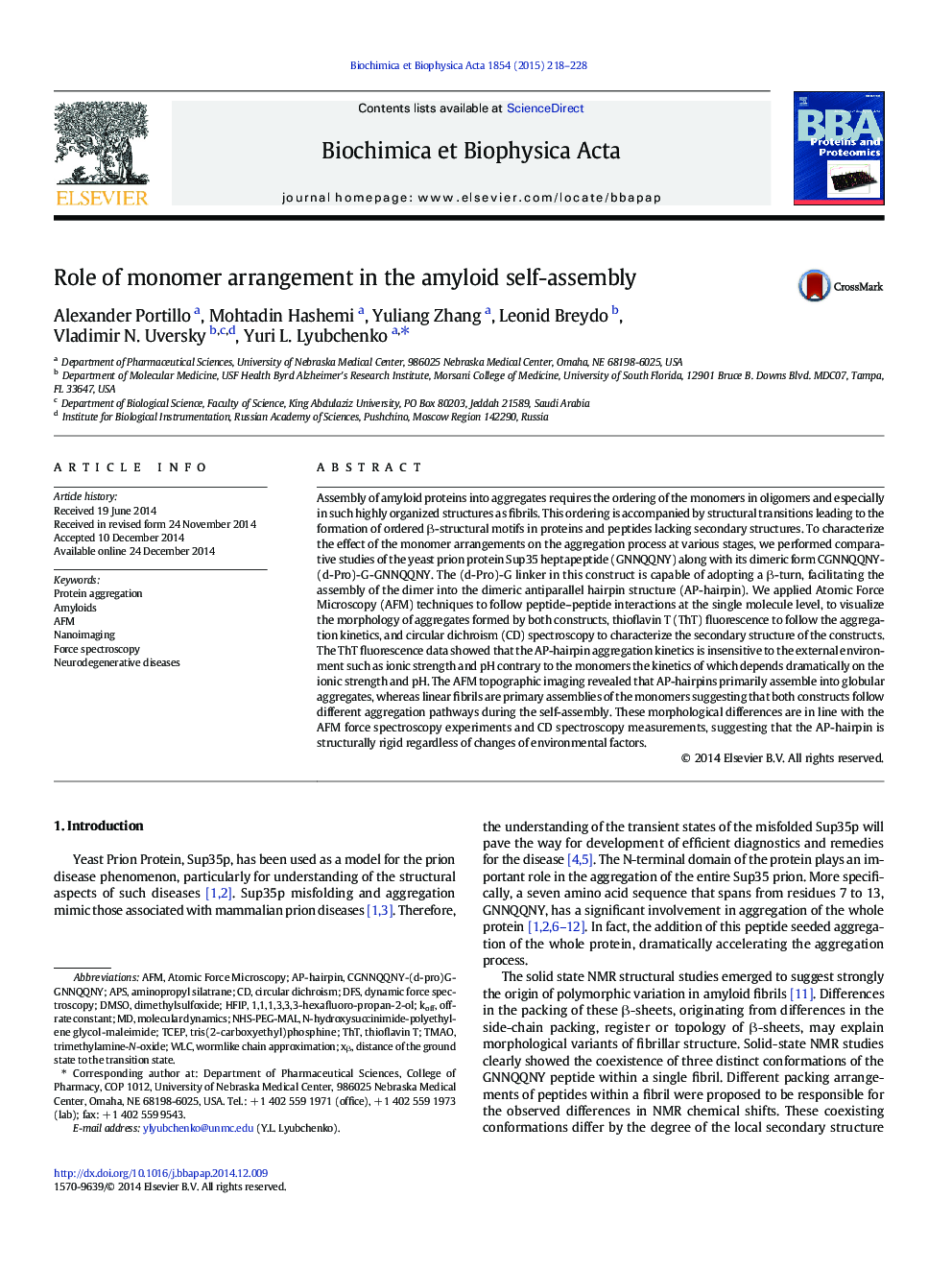| کد مقاله | کد نشریه | سال انتشار | مقاله انگلیسی | نسخه تمام متن |
|---|---|---|---|---|
| 1177758 | 962583 | 2015 | 11 صفحه PDF | دانلود رایگان |
• The pre-assembly of the peptide monomer into a hairpin design changes its aggregation propensity.
• Compared to the monomer AP dimer forms fibrils with a low efficiency
• CD measurements showed that AP-dimer is characterized by the limited conformational dynamics.
• Hypothesis — the morphology of aggregates is defined by the conformational dynamics of monomers.
Assembly of amyloid proteins into aggregates requires the ordering of the monomers in oligomers and especially in such highly organized structures as fibrils. This ordering is accompanied by structural transitions leading to the formation of ordered β-structural motifs in proteins and peptides lacking secondary structures. To characterize the effect of the monomer arrangements on the aggregation process at various stages, we performed comparative studies of the yeast prion protein Sup35 heptapeptide (GNNQQNY) along with its dimeric form CGNNQQNY-(d-Pro)-G-GNNQQNY. The (d-Pro)-G linker in this construct is capable of adopting a β-turn, facilitating the assembly of the dimer into the dimeric antiparallel hairpin structure (AP-hairpin). We applied Atomic Force Microscopy (AFM) techniques to follow peptide–peptide interactions at the single molecule level, to visualize the morphology of aggregates formed by both constructs, thioflavin T (ThT) fluorescence to follow the aggregation kinetics, and circular dichroism (CD) spectroscopy to characterize the secondary structure of the constructs. The ThT fluorescence data showed that the AP-hairpin aggregation kinetics is insensitive to the external environment such as ionic strength and pH contrary to the monomers the kinetics of which depends dramatically on the ionic strength and pH. The AFM topographic imaging revealed that AP-hairpins primarily assemble into globular aggregates, whereas linear fibrils are primary assemblies of the monomers suggesting that both constructs follow different aggregation pathways during the self-assembly. These morphological differences are in line with the AFM force spectroscopy experiments and CD spectroscopy measurements, suggesting that the AP-hairpin is structurally rigid regardless of changes of environmental factors.
Journal: Biochimica et Biophysica Acta (BBA) - Proteins and Proteomics - Volume 1854, Issue 3, March 2015, Pages 218–228
